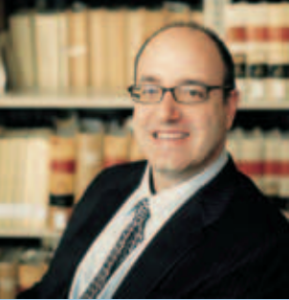From the Dean

MOST DEANS (INCLUDING THIS ONE) USE THESE INTRODUCTORY LETTERS TO PRIME READERS FOR ACHIEVEMENTS CELEBRATED IN THE PAGES THAT FOLLOW. The object is less to challenge than to instill a sense of anticipation and pride. This letter is different. The focus of this issue is the state of our profession. And that is a worrisome topic. • I have occasionally remarked, though only in small settings before today, that the state of the legal profession brings to mind Rome, circa A.D. 300. On the surface, it looks grander and more magnificent than ever, but the foundation may be about to collapse. It’s meant to be a joke. But the uneasy laugh this comment invariably elicits suggests that it may be closer to the mark than any of us wishes. • Certainly our profession has changed profoundly in the past generation. The basic structure still looks the same: Most lawyers practice in firms, most firms are partnerships with cadres of associates, most work is performed for hourly fees, and so on. Yet it’s the traditional model on steroids: Big firms employ thousands rather than hundreds of lawyers, with offices around the world. Partner/associate ratios have changed dramatically, particularly if we focus on equity partners, while legal work has become increasingly specialized and expectations for billable hours have soared. • Such changes have consequences. Clients, especially corporate clients, are less willing simply to pay what firms charge and much less willing to subsidize the training of young associates. Technology has exacerbated this trend, enabling clients to do for themselves things they used to need from outside counsel. Making a practice profitable has increased demand for lawyers to bill hours, which has, in turn, forced firms to raise salaries, which has further increased the need to bill hours. Partly as a result, new associates seldom join firms intending to stay for more than a few years. Lateral hiring has exploded, undermining the culture and sense of community of many firms. And factors like these have stymied or undone progress that was just beginning to be made in advancing women and minorities into the top ranks of legal practice. • Twenty years ago, most lawyers would have scoffed at the idea that profitability, much less profits-per-partner, should be the measure of success and prestige. Yet that is where we are. Law firms are run like businesses by managing partners and committees whose time is almost wholly occupied with, well, managing. And competition is fierce: to be bigger, pay more, bill more hours, and open more offices. To be more profitable.
Does anyone actually want this? The lawyers, managing partners, and general counsels I meet are deeply concerned about what’s happening. Yet they feel unable to stop it, powerless to resist the stifling market forces that drive their decisions. And for good reason, because the problems are complex and exist at every level. Students say they want a better work/life balance, yet invariably choose the firm that ranks highest in The American Lawyer’s list of the top 100 law firms. Having spent their lives learning to collect gold stars, they apparently find it impossible to stop— something we (that is, law schools) make easy by forcing most of them to graduate with a mountain of debt. Law firms say they want young associates to do pro bono work, and they mean it. But the insidious pressure to increase profitability by billing hours remains. And on and on. No one can be blamed when everyone is to blame.
I have no answer to this. Not yet at least. We need to understand the issues much better than we do now. We need to develop alternative ways to practice law and to structure a legal practice. And we need to take chances, like the ones we are taking within the law school by restructuring our curriculum, re-envisioning interdisciplinary education, creating new forms of clinical education, and redoubling our efforts to teach students the value of public service.
Certainly Stanford Law has a role to play. It’s our responsibility to educate students about the nature of their profession and to reinforce their desire for a rich personal and professional life that lets them use their skills for the betterment of society. We must bring scholarly resources to bear on developing solutions and help the various stakeholders talk productively. Among my hopes for the coming years is to develop a program in “the business of law” through which we can begin to discharge these responsibilities. For now, we must wake up to what is happening and muster our will to secure the future of our profession, preserving the qualities that attracted so many of us to the study of law in the first place.
